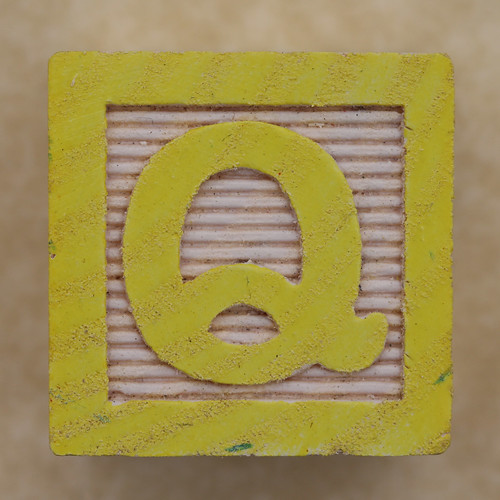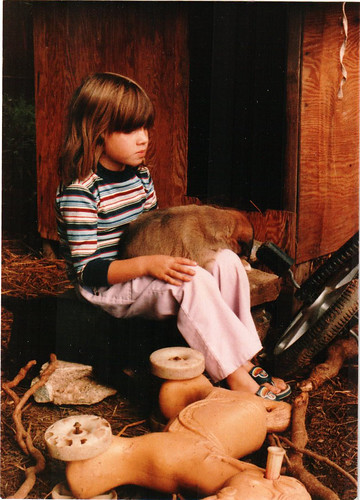In his books, Vladimir Nabokov plays with puns, pranks, and false memories in an attempt to drive his audience crazy. In his novel, Lolita, and again in Pale Fire, Nabokov gives the reader only one perspective from which to view events. For this reason, the reader must believe what the narrator is telling him or her or else one cannot even begin to read the book. But when the narrator is obviously insane, as in the case of Humbert Humbert, or simply crazy, such as Charles Kinbote, the reader is lead down a twisting bath of questions, from which there is no return. Nabokov may also have played with this idea in his own autobiography, for there are several stories within Speak, Memory which may border on the fuzzier side of authenticity.
Lolita, told entirely from the perspective of a pedophile, Humbert Humbert, is a prime example of reader having to trust fiction. The only way that the reader can know the characters is through the narrator. Since the narrator is a pedophile fixated on a young girl, the question is raised: Can the reader actually trust his descriptions of people and events? This question becomes even more complicated when the question of Humbert’s sanity is raised. If Humbert is truly sane, and understands the monstrosity of his actions, one may assume that he is not depicting events correctly, but could be if he wanted to. On the flip side, if Humbert is possibly insane, perhaps his take on reality, however skewed, is what he is truly experiencing. This view, in fact, negates the perspectives of the other characters, since Humbert’s reality, then, would be the only reality.
The reader, however, has no other point of reference from which to view the story. The reader is, in fact, a crucial part to the story. Humbert spells it out when he says, “Imagine me; I shall not exist if you do not imagine me.” (p 129) One is inexorably pulled into Humbert’s world and led to sympathize with him because of the singular perspective presented in the work. If the reader does not sympathize with Humbert and trust his story, then there is little use in reading the story. The reader will inevitably be caught up in a web of nonsense, unable to proceed in the story for being mired by irrelevant questions: Is Humbert sane? Can his perspective be trusted? Was Lolita really leading him on, or was it all part of a grand delusion?
One more thought is brought up when thinking about Lolita. Since Humbert is the main character in the book, that makes him the protagonist. Since protagonist is generally associated with a proponent or champion of a cause, the lines of realty become further blurred as the reader must condone (rather than oppose) the illicit actions of Humbert in order to continue to read the book. However, a closer look at the etymology of protagonist reveals that it is derived from combining the Greek words prot-, meaning competitor, and -agon, meaning agony. In other words, Humbert is playing games in agony, a fitting pastime for this particular protagonist.
This question of reality can also be brought to bear on Pale Fire. The insanity of Charles Kinbote is easily revealed within the first few paragraphs of his commentary. However, questions have been raised as to the true nature of that commentary and the commentator. Some people have speculated that Nabokov’s idea behind the commentary was that it was actually written by John Shade, making it look like another person, slightly insane, wrote it. This, of course, would make John Shade insane himself. There is some support to the idea that Nabokov intended Shade to be insane. Of all the characters depicted through the eyes of Kinbote, Shade is the only sane one. If a mad man was writing a commentary made to look like the work of another commenting on a poem written by said mad man, it may make sense, if that mad man were thinking coherently, to draw attention away from his own insanity by surrounding himself with greater insane characters than himself. This theory does require the insane man to think in a somewhat linear path, which may, in itself, negate the insanity theory.
Again, as in Lolita, the only perspective giving in Pale Fire is Kinbote’s. To avoid going insane the reader has to trust that the commentator is Kinbote. But how far can the reader trust past that? Like Humbert, Kinbote may have a propensity to skew events to his own liking. It is a bit more obvious in Pale Fire that Kinbote does have a stranger version of reality. When reading his commentary on the poem, that, at least, should become blatantly clear to the reader. Unlike Lolita, however, the reader is expected to notice the discrepancies between the poem (reality) and the commentary (Kinbote’s insanity). Pale Fire is, in actuality, a mystery novel, and the mystery that the reader must solve is reality, what is really real.
Nabokov seemed to love mysteries and crossing the line between sane and crazy in his novels. There is an element of Sherlock Holmes, little clues, dropped, like carefully selected pebbles, into the pool of consciousness of the reader. There is also a blurring between realities, of which the reader may not be able to trust any. So did these penchants, perchance, cross over into his autobiography?
Speak, Memory does not have the same flavor of mystery or insanity found in the other two works. But Nabokov does imbue the book with a feeling that he is certainly not revealing all, and what he does reveal may not be entirely trusted. The opening paragraph of the book is written as if it were a study of another person, although he is talking about himself. In the same chapter Nabokov tells his reader that the chronology of his childhood memories may not be trusted either, as he compares his story to that of Gilgamesh which can only be dated by the movement of the comets and eclipses (p 25). Certainly, a narrator who compares his life story with the Epic of Gilgamesh cannot be thought to be completely sane, or perhaps he is just really arrogant.
There is also the fact that even in autobiographies the narrator can be an unreliable one. Facts brought from memory and pertaining to childhood exploits are not only unverifiable but admittedly fallible. Nabokov, himself, admits in his book to not trusting some memories and at other times having false memories. Despite being an autobiography the narrator can no more be trusted than the narrator of Pale Fire. In fact, it may seem to the careful reader that Nabokov goes out of his way to throw true and false memories together with equal propensity.
There is, within his memories of his tutors, a scene in which during a slide show several of the young boys make shadow puppets during a brief interlude. Nabokov tells of a flexible boy who was able to silhouette his foot and adds, for the reader’s benefit, “could it be I after all – the Hyde of my Jekyll?” This only serves to make the reader doubt the dependability of the narrator. If it was his foot, he should have said that it was his foot. Is anything that he tells the reader to be trusted?
Of course some things can be verified; living accommodations, important events occurring in the world, recorded events in Nabokov’s life, and family and friends near to him. But beyond those few things, Nabokov’s memories seem to run away with him and the reader. There is, for instance, a passage in chapter 3 in which Nabokov’s uncle creates a cipher, that when solved should spell out “To be or not to be”. The problem with the problem is that it is not a true cipher with a distinguishable logarithm, but rather seems to be random numbers assigned to specific letters. In other words, each letter represented has a distinct number, for example 13 for “o”, but there is no way to know what numbers unrepresented letters, such as “p”, correspond to. Is this just a fault in the memory of Nabokov, or did he make up the mathematical abilities of his uncle? Further confounding the reader, Nabokov gives no solution to the cipher that he created, leaving the reader continually in doubt as to the true message (although the line from Hamlet does seem to fit the criteria better than any other line).
Eventually, however, the reader will go insane trying to unravel the mysteries of Vladimir Nabokov and his books. Nabokov took great care to weave deliberate puns, pranks, and red herrings into his works. Every reading will bring new connections to light, and as the reader tries to solve all the puzzles and mysteries, and make all the connections, it will only lead him crazy.
Bibliography
Boyle, Robert. “An Absence Of Wood Nymphs.” SI Vault. A CNN Network Site. 14 Sep. 1959. Web. 3 Sep. 2009.
Fogarty, Robert. “In Search of Memory.” Art Publications. bNet. 2003. Web. 3 Sep. 2009.
Grayson, Jane. Vladimir Nabokov. Woodstock, NY: Overlook Press, 2002. Print
Nabokov, Vladimir. The Annotated Lolita. 1955. Ed. Alfred Appel, Jr. New York: Vintage Books. 1991. Print.
------. Pale Fire. New York: Random House, Inc. 1962. Print.
------. Speak, Memory. New York: Vintage International. 1967. Print.
------. “Transparent Things.” Nabokov: Novels 1969-1974. Ed. Brian Boyd. New York: Literary Classics of the United States, 1996. 487-562. Print.
Vickers, Graham. Chasing Lolita: How Popular Culture Corrupted Nabokov's Little Girl All Over Again. Chicago, IL: Chicago Review Press, 2008. Print.
A Dictionary of the Underworld. 1949. London: Routledge & Kegan Paul, Ltd. 1961. Print.

















